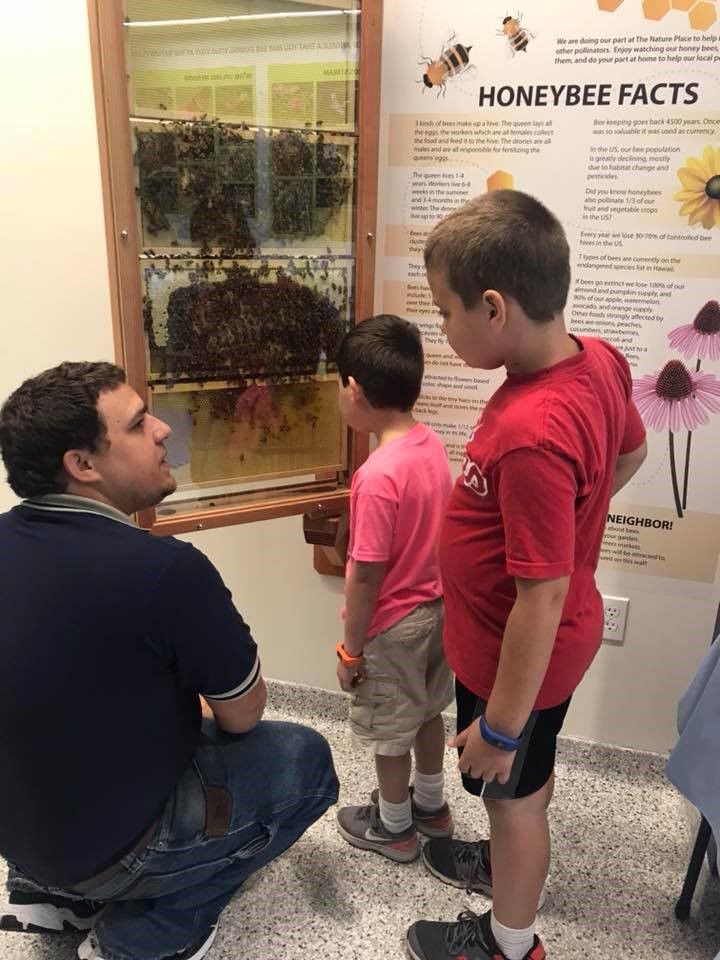If you’re within a few miles radius of Angelica Park and happen upon a swarm of tens of thousands of bees… we may be able to tell you where they came from! We’re bee-yond excited to announce that the first swarm of Berks Nature’s honeybees left our overcrowded lobby hive this week!
“Essentially when a hive swarms, it’s because there’s not enough room anymore,” explained our beekeeper, Jim Griesemer, of Wernersville-based Griesemer Beekeeping. “Some of the bees and the queen will leave.”
Jim estimates that 15,000-20,000 bees were put into the hive when it was first installed back in May. “I think since we installed it, it probably grew five or six-fold,” he said, adding: “Just looking at the hive, I’d estimate about half of them left (during the swarm).”
We chatted with Jim to learn a little more about our fascinating bees.
Here, he breaks down the swarming process:
Do bees plan to swarm in advance?
Absolutely. “For a couple days prior to the group leaving, there will be some scout bees that go out and look for potential homes,” Jim said. “They’ll go out and do their hunt and come home and convey their message. The stronger they feel about a location, then the more passionate they’ll be about conveying it to the others. Then when they come to a general consensus, they’ll head out and get things moving.”
What about all of the rain we’ve had this past week?
“Bees can sense the weather, and even the changes with the barometer,” he explained. “They can sense, ‘We’ve got to go now,’ versus hanging out and waiting another day. They’re much better than figuring out the weather than we are.”
What happens to the old hive after the bees leave?
According to Jim, bees prepare in advance, so that the hive will carry on with new generations. “In preparation for swarming, the current queen will lay eggs that the bees will turn into new potential queens,” he said. “The first one to hatch will go through and destroy every other cell. And if you end up with two queens in the hive for some reason, say they both hatch before one can destroy the other cells, then they will fight to the death. Once you have a single queen, she’ll go out on a couple of mating flights, and then come back and be the new queen.”
How far do the bees travel after swarming?
“Basically, we ended up with two hives coming from one,” Jim explained. “So the bees are going to go out within a couple of miles, probably, and find a location to call their home.”
Are swarms good for the environment?
They certainly are, “from a pollinator standpoint,” Jim said.
If you happen upon a swarm of bees yourself, Jim urges you to contact a local beekeeper, or the Penn State Extension.




